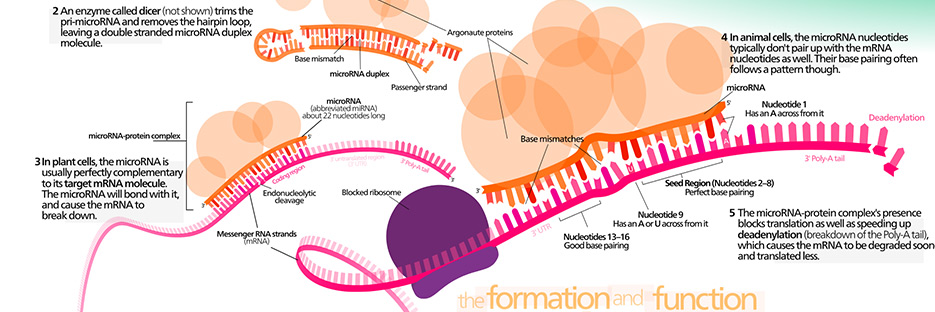MicroRNAs (miRNAs) are a class of small non-coding RNA molecules that play a pivotal role in the regulation of gene expression. These tiny molecules have garnered significant attention in the field of drug discovery due to their involvement in a wide range of physiological and pathological processes, including cancer, cardiovascular diseases, and neurological disorders. Harnessing the power of miRNAs, researchers have now developed miRNA targeted small molecule libraries, enabling the identification of compounds that modulate miRNA activity and hold promise for the development of novel therapeutic strategies.
Understanding the Role of miRNAs in Disease
To appreciate the potential of miRNA targeted small molecule libraries, it’s important to understand the role of miRNAs in disease processes. MiRNAs function by binding to messenger RNA (mRNA) molecules, leading to their degradation or translation inhibition. Dysregulation of miRNA expression or function has been implicated in numerous diseases, making them attractive targets for therapeutic intervention.
For instance, in cancer, specific miRNAs can act as either tumor suppressors or oncogenes, promoting or inhibiting the growth and spread of cancer cells. Modulating the levels or activity of these miRNAs could provide a potential avenue for cancer treatment. Similarly, miRNAs have been implicated in cardiovascular diseases, neurodegenerative disorders, and viral infections, highlighting their broad therapeutic potential.
Developing miRNA Targeted Small Molecule Libraries
MiRNA targeted small molecule libraries consist of collections of compounds specifically tailored to interact with and modulate the activity of miRNAs. The libraries are designed using various strategies, including high-throughput screening and computational modeling, to identify small molecules that can selectively bind to specific miRNAs and modify their functions.
One approach involves developing small molecules that mimic or antagonize the natural miRNA-mRNA interaction. These small molecules, termed miRNA mimics or inhibitors, can either enhance or block the regulatory function of miRNAs on target genes. Another strategy focuses on compounds that target proteins involved in miRNA biogenesis or stability, modulating the overall miRNA expression profile.
Advantages of miRNA Targeted Small Molecule Libraries
The emergence of miRNA targeted small molecule libraries offers several advantages for drug discovery and development:
Specificity: MiRNA targeted small molecule libraries enable the identification of compounds that selectively interact with specific miRNAs, potentially minimizing off-target effects.
Versatility: With thousands of miRNAs identified in the human genome, each with the potential to regulate multiple target genes, miRNA targeted small molecule libraries provide a diverse array of targets for therapeutic intervention across various diseases.
Combination Therapies: MiRNA targeted small molecule libraries also present opportunities for combination therapies, as multiple miRNAs may be dysregulated in complex diseases. Combining different compounds can target multiple miRNAs simultaneously, enhancing therapeutic efficacy.
Delivery: Small molecules are typically more easily deliverable to target tissues compared to larger biologic agents like RNA-based therapeutics. This makes small molecule-based approaches attractive for therapeutic applications.
Future Perspectives
The development of miRNA targeted small molecule libraries represents an exciting advancement in the field of miRNA-based therapeutics. As researchers continue to untangle the intricacies of miRNA biology and expand their understanding of disease-associated miRNA profiles, the potential for identifying novel compounds and treatment strategies grows.
Moving forward, ongoing research efforts aim to optimize the design and efficacy of miRNA targeted small molecules as well as explore innovative delivery methods. Additionally, harnessing the power of artificial intelligence and computational tools can enhance the screening and designing processes, accelerating the discovery of more effective and selective compounds.
In conclusion, miRNA targeted small molecule libraries offer a promising avenue for the development of miRNA-based therapeutics. By specifically modulating the activity of disease-associated miRNAs, these libraries open doors to new treatment modalities for various diseases. As further advancements are made, we can look forward to the potential of miRNA targeted small molecule libraries revolutionizing the field of precision medicine.




